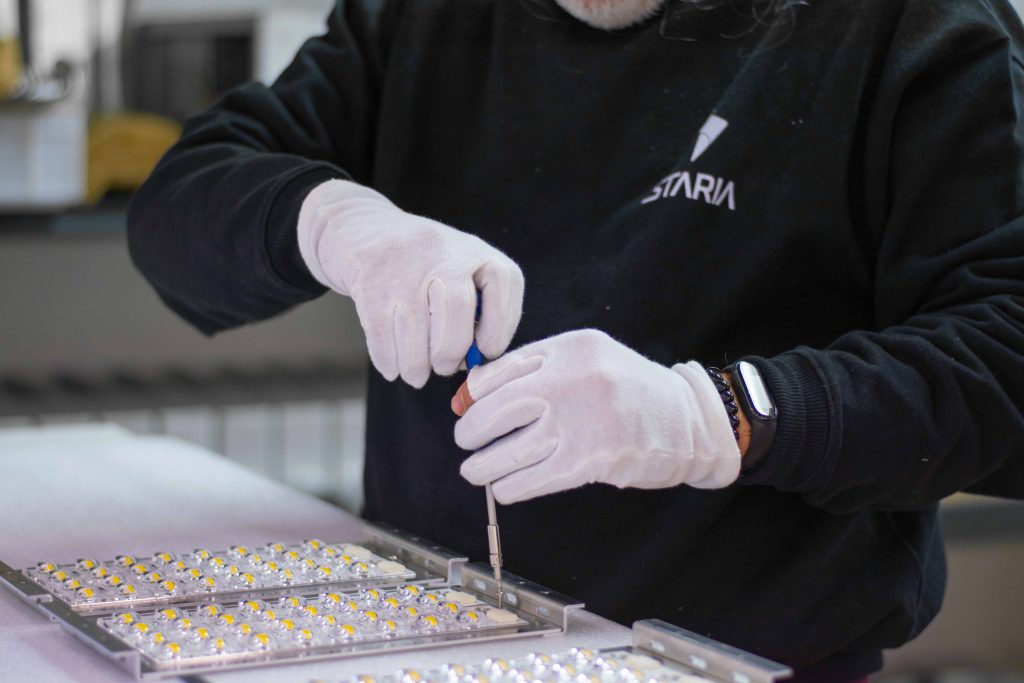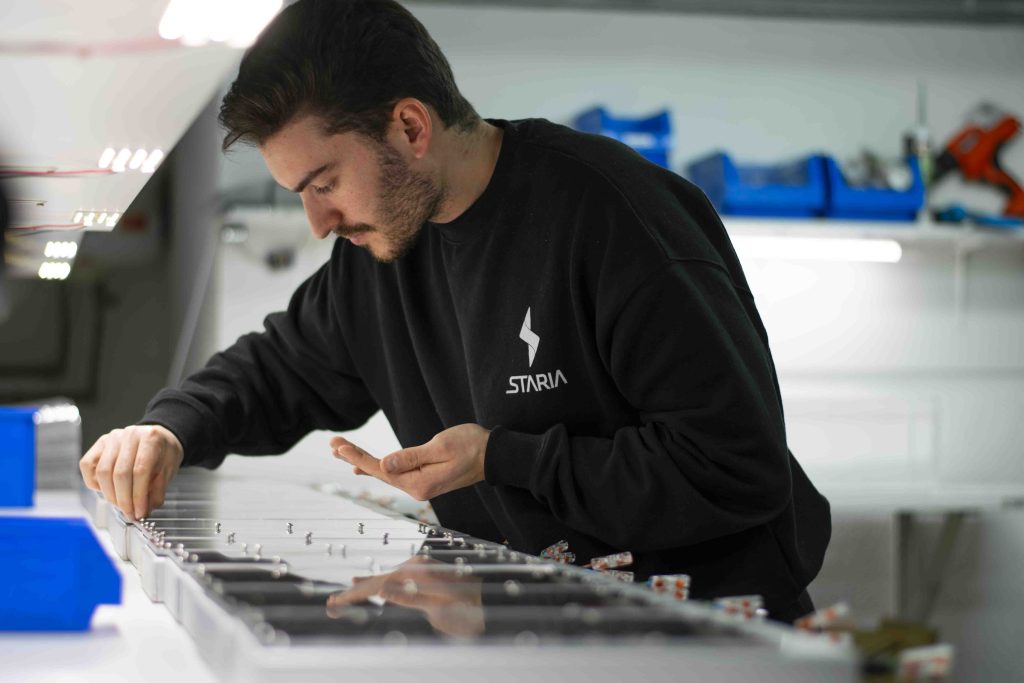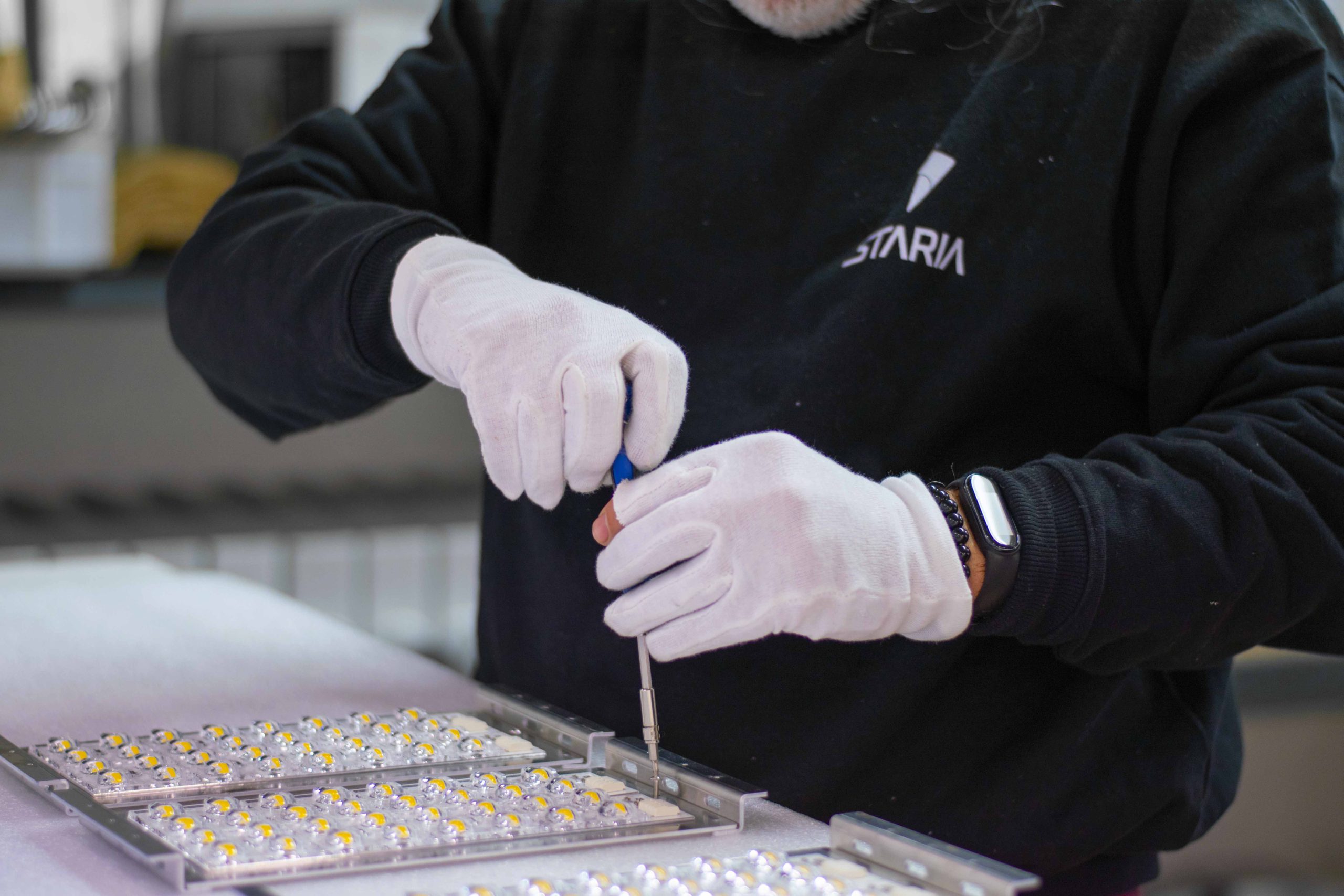June, 2024
Light emitting diodes (LEDs) have revolutionised lighting, providing an efficient and long-lasting alternative to traditional light sources.
In the field of solar lighting, LEDs play a crucial role in improving the sustainability and energy efficiency of luminaires. In this post, we will explore what an LED is, how it works, and how it is applied in solar lighting.
Introduction
LEDs are fundamental in solar lighting solutions due to their energy efficiency and long lifetime. These characteristics make them ideal for applications where sustainability and energy savings are a priority.
We will now take a closer look at what an LED is, how it works and why it is so beneficial for solar lighting.

LED History
LED technology has come a long way since its invention in 1962 by Nick Holonyak, Jr. who created the first visible LED.
Originally, LEDs emitted only red light and were mainly used as indicators in electronic devices. However, over time, LEDs have been developed in different colours and with higher luminous efficiency, making them a viable option for lighting of any kind.
What is an LED
An LED diode is a semiconductor that emits light when an electric current passes through it.
Unlike traditional incandescent bulbs that produce light by heating a filament, LEDs generate light by recombining electrons and holes in a semiconductor material.
This process is highly efficient, as it converts most of the electrical energy into visible light, with very little loss in the form of heat, as is the case with incandescent bulbs.
How it Works
The LED works based on electroluminescence, a phenomenon where a material emits light in response to an electric current. In an LED, the semiconductor material is typically composed of gallium compounds, such as gallium phosphide (GaP) or gallium nitride (GaN). When an electric current passes through the material, electrons in the semiconductor recombine with holes, releasing energy in the form of photons, i.e. light.
For an LED to work, a suitable power supply is needed to provide a stable direct current (DC). In the context of solar lighting, this current is obtained from batteries that store the energy captured by the solar panels during the day. This ensures that the LEDs can illuminate during the night without the need of connection to the power grid.
Advantages of LEDs in Solar Lighting
Energy Efficiency: LEDs are extremely efficient, converting up to 90% of electrical energy into light. This reduces the energy demand in solar lighting systems, allowing batteries and solar panels to be smaller and less expensive.
Long Life: A typical LED can last between 25,000 and 50,000 hours, much longer than incandescent or fluorescent bulbs. This significantly reduces maintenance and replacement costs for solar luminaires.
Robustness and Durability: LEDs are solid devices with no fragile filaments, making them resistant to shock and vibration. This is ideal for outdoor applications where environmental conditions can be adverse.
Design Flexibility: LEDs are very small and can be integrated into a variety of luminaire designs, allowing for innovative and customised solar lighting solutions.
LED Applications in Solar Lighting
LEDs are used in a wide range of solar lighting applications, from garden lights to street lighting. Their efficiency and durability make them particularly suitable for lighting paths, streets and public spaces in remote areas where access to the grid is limited or non-existent.
In addition, LEDs are ideal for solar lighting systems due to their ability to operate on low voltages and their compatibility with smart control technologies.
How Staria Technologies uses LEDs
In Staria Technologies, we take advantage of the benefits of LEDs to create efficient and sustainable solar lighting solutions.
Our luminaires are designed to maximise light efficiency and minimise light pollution. We use specialised LED lenses that direct light only to the areas needed, reducing glare and wasted light.
In addition, our solar luminaires are intelligent and can automatically adjust their intensity depending on the time of day and the use of the space.
This not only saves energy, but also prolongs battery life and reduces maintenance costs.

Conclusions
LEDs have transformed the field of lighting, offering an efficient and long-lasting alternative to traditional light sources.
In the context of solar lighting, LEDs are essential to maximise energy efficiency and sustainability. In Staria Technologies, we are committed to using LED technology to provide innovative solar lighting solutions that improve the quality of life and protect the environment.

